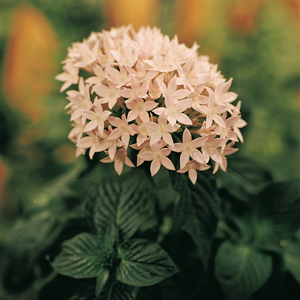3/15/2009
Secrets of the Heat Lovers
Compiled Ellen C. Wells

As a wholesale grower in Naples, Florida, American Farms’ partner Jim Pugh knows a thing or two about heat-loving annuals. We chatted with Jim about what it takes to succeed with this group of color. Here’s what he has to say about those notorious heat-lovers vinca, Mexican heather (Cuphea hyssopifolia) blue daze (Evolvulus glomeratus) and pentas.
How tos for heat-lovers
Everyone’s situation is different. What you do in Florida with our particular conditions will be totally different from what a guy growing in New York or Michigan in a greenhouse will be doing. You’ve got to tailor the crops to your environment. These heat-lovers do thrive in warm temperatures and high humidity. They love that environment, and that’s why they do so well down here. One of the reasons we’ve seen such an upsurge in demand for this product is because these crops will perform. If you get a blast of hot air in July or August, a 100F (38C) day, they’re not going to wither and die as maybe your petunias or impatiens might. These crops do take the heat very well.
We basically treat all of our heat-loving crops the same. They’re given the same soil mix, and all do well growing under very high light conditions, warm temperatures and moderate irrigation regimes. The only thing we do tailor for each individual crop is the PGR schedule and certain fungicides and insecticides due to phytotoxic issues.
Vinca
The Cora series from Goldsmith has totally revolutionized the vinca market here in Florida. I know there’s a lot of good F\sub1\ hybrids that have come through, but we still had difficulties during the hot, humid, rainy period of summer. Vinca would all ultimately melt down due to aerial Phytophthora. Cora has just been able to withstand that onslaught because it’s bred to be resistant to that particular pathogen. Some of the competition claims that it’s resistant to only one pathogen. Granted, it’s susceptible to many other pathogens, but that particular aerial Phytophthora is so virulent, so aggressive, that nothing else could really get a chance to gain a foothold. Cora is a great series and a great product. From a disease standpoint, that’s what we like to push.
As for growing vinca, the primary one we grow is the Cora series. It withstands both heat and cold. We have it growing here now [early March] in an unheated greenhouse. Temperatures made it down to the 30s last night. It still performed beautifully.
For most vincas, you would need a fair amount of heat to get them going; for the north, obviously that would be the case. Down here in Florida we see the Cora series do fairly well throughout the year, through cold and warm. Typically with vinca, they sit and languish under cool temperatures and don’t seem to grow at all. Ultimately, they either get a root rot problem or Phytophthora will get in there, or something will take it down. We typically had not grown vinca at all until April availability. We struggled with the potentially cool weather that we get in February and even March. Cora seems to be working right through, holding the heat.
Mexican Heather
Generally, Mexican heather (Cuphea hyssopifolia) is one of the easiest crops you could possibly grow. It’s a no brainer for the grower, the landscaper and the homeowner. It really does perform well, and it’ll perform marginally well for the growers up north as they get them ready for sale in spring. And it thrives in heat.
Mexican heather is a simple plant with a basic fertilizer regime. We don’t do anything special to it. We do have some moderate growth regulation applications that we apply to maintain a compact habit with lots of color as the market demands.
Blue Daze
As for the blue daze (Evolvulus glomeratus), it’s a simple and easy crop. They don’t require any special treatment whatsoever, at least from our viewpoint here in Florida, with the exact same requirements as vinca and Mexican heather. It does like the heat, though. Blue daze is a plant that will not do much growing during the cold winter months, especially in terms of flowering, so we put those in our greenhouses. As soon as the weather gets warm enough, about the second or third week in March, we’ll put those crops outside in full sun.
Pentas
Pentas are excellent summer heat-loving plants. In fact it’s one of our largest crops we grow down here in Florida. We happen to grow a lot of the Butterfly pentas from PanAmerican. It’s a great plant for the landscape, performs wonderfully and has great breeding. There are others—the Kaleidoscopes and the Graffitis from other breeders that work well. The Butterflies you usually grow in a larger container like a 6-in. or a gallon. Again, we have minimal problems with the crop as long as we give it the necessary heat and light that it requires. A little bit of gentle PGRs, keep it toned, and the plant works like clockwork. They, too, will perform throughout the summer with minimal problems. They have the added benefit of attracting butterflies. Anything that will give them a little extra interest is going to help sales.